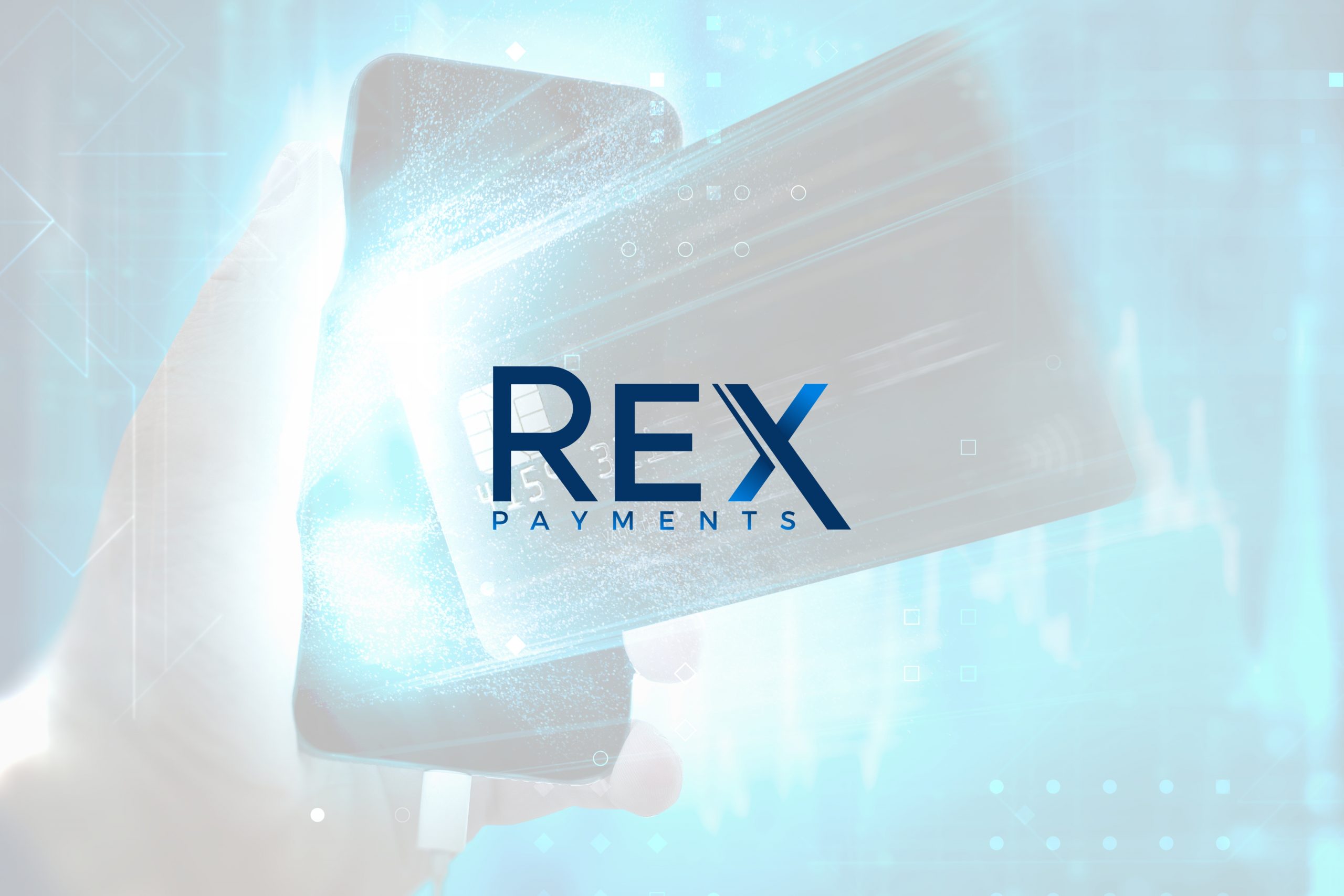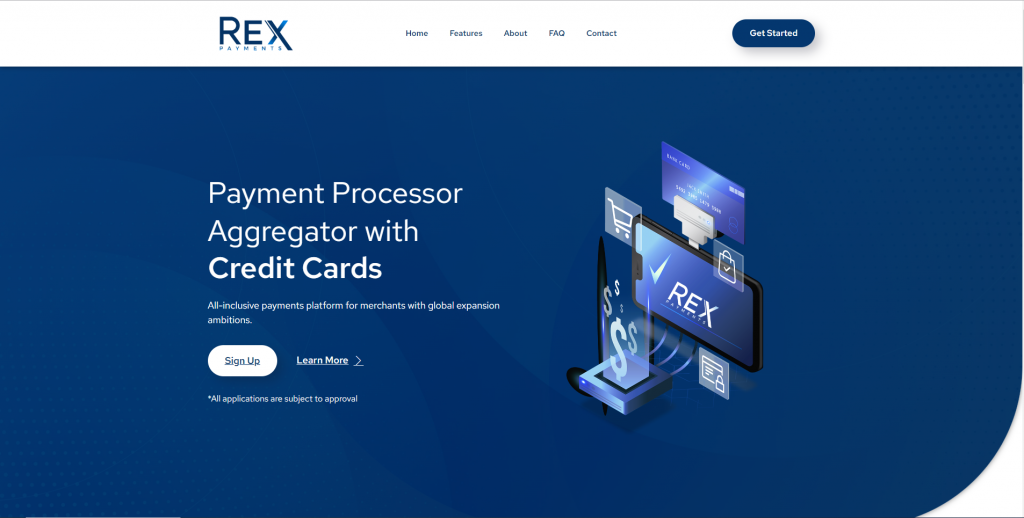
The world of payments is always changing as new tools and ideas come out and affect how we do business. People are becoming more computerized and less likely to carry cash. Businesses like RexPayments are leading the way in changing the payments business.
In the past, people paid for things by trading them for other goods. The way we pay for things has changed a lot since the rise of online shopping and mobile banking. As people learn more about technology and want things to be easier, new payment methods are challenging the old ones.
RexPayments is a big deal in the payments industry because it gives people and companies a safe and easy way to do business. Because they use cutting-edge technology and think ahead, they are making transfers possible in the future. We will talk about how RexPayments is changing the business world and what that means for both customers and companies in this piece.
Overview of the Current Payments Industry
Several new technologies and more people using digital payment methods have caused the payments industry to change quickly over the past few years. Not long ago, people used cash and checks to pay for things. Now, mobile payments and smart cards are more handy and faster. This move toward digitization has not only made it easier for people to pay, but it has also given companies new ways to simplify their processes and make the customer experience better.
The payments industry has also grown thanks to the popularity of e-commerce and online shopping. Online payment sites are now an important part of the world economy. When we look at the current state of the payments industry as a whole, it’s clear that changes in technology and customer habits have profoundly altered the way we handle our money.
The Growing Need for a Modern Payment System
With more and more purchases happening online, it’s clear that we need a more up-to-date banking method. Traditional ways of paying, like cash and checks, aren’t working as well as they used to because people depend on technology more and more.
People are using electronic transfers more and more because they are convenient and quick. People expect to be able to pay for things without cash or checks in a world that is becoming more and more linked. People and companies can finish transactions quickly and easily with a modern payment system that lets transactions happen instantly and without any problems.
Additionally, current banking systems offer higher levels of security compared to older ones. Since internet scams and identity theft are becoming more common, it is very important to have strong security measures in place. Security features like encryption and two-factor login are built into modern payment systems to keep private financial information safe.
Another benefit of a current payment system is that it works quickly. By automating payment processes, jobs that take a lot of time are taken away, like counting cash and checks by hand. This speeds up deals and makes it easier for both buyers and sellers to keep track of everything.
Traditional Payment Systems and Their Limitations
Cash and checks are the main forms of payment in traditional systems, but they have some problems that make them less useful in today’s digital world. These systems have many problems, such as not being secure, having higher trade costs, and being hard to get to.
One big problem with old-fashioned payment methods is that they are not very safe. It is easy to lose or steal cash, and it is also easy to fake or change checks. This makes people worry about the safety of deals and the chance of losing money. Digital payment methods, on the other hand, use more advanced encryption and identity methods to keep both people and companies safer.
Also, transaction fees for standard payment methods are often higher than those for digital ones. People who use cash or checks may have to pay fees for issuing, handling, and releasing their funds. Using these ways also requires moving things around and handling them by hand, which takes time and effort. On the other hand, digital payment methods like credit cards and mobile wallets make transactions easier and often have lower fees, which saves you time and money.
Also, standard payment methods are hard to use in some places, especially those that are far away or not well developed. People in these areas might not have any other choice but to use cash, which means they can’t use the benefits of digital activities like shopping online or paying bills online. This can make it harder for people to get money and help the economy grow.
Features of the RexPayments Platform
The RexPayments Platform is a new way for businesses and people to make payments that is meant to make the process easier and better. There are many features on this site that meet the wants of different users and make deals safe, quick, and easy. The RexPayments Platform is a complete solution that changes the way payments are made. It works with current systems without any problems and lets you choose from different payment choices.
Secure Transactions with Advanced Encryption Technology
Protecting the privacy and security of private data sent over networks requires transactions that are safe and use advanced encryption technology. An important part of this security is encryption, which changes data into a form that can’t be read and can only be understood with the right decoding key.
A lot of the time, different kinds of encryption methods are used to keep deals safe. Advanced Encryption Standard (AES) and Rivest-Shamir-Adleman (RSA) are two well-known ones. AES is a symmetric encryption method that is widely used because it works well and is very safe. On the other hand, RSA is an asymmetric encryption method that uses two keys: a public key to secure and a private key to decode.
It is important to use secure methods like Secure Sockets Layer (SSL) or Transport Layer Security (TLS) to make transactions even safer. By setting up a safe line of contact between the user’s computer and the server, these methods make sure that data is protected while it’s being sent.
Using strong encryption keys is another important thing to do. Transaction security can be hacked if the keys are weak or easy to figure out. It is important to make encryption keys that are long enough and random enough to stop people who aren’t supposed to be there from decrypting your data.
Fast Transactions and Low Processing Fees
Low handling fees and quick transfers have many benefits for users, making their total experience much better. One of the best things about fast deals is that they can be finished quickly, which saves people important time. People who use standard ways to send money, like bank transfers, often have to wait hours or even days for their transactions to be handled. With fast transfers, users don’t have to wait for this time to pass; they can do their business right away, whether they’re buying something or sending money to someone else.
Low handling fees not only save time but also improve the user experience by lowering costs. Users may find it difficult to deal with high handling fees, especially when they have to do a lot of activities or deal with large amounts of money. Users can make deals for less money when handling fees are low, which saves them money in the long run.
It’s also convenient that transfers are quick and there aren’t many fees. Users can finish deals more quickly and for less money, which makes handling money easier in everyday life. Users can get more done when transactions are quick and fees are cheap. This is true whether they are paying their bills, shopping online, or giving money to family and friends.
Fast transfers and low handling fees make the whole experience a lot better for the user. They are easy to use, save time, and lower prices. It lets people do deals more quickly and for less money, which makes financial tasks more efficient and cost-effective.
Flexible Solutions for Consumers and Businesses Alike
Both individuals and companies can choose from a number of flexible solutions that offer benefits and choices to meet their specific needs. There are many good things about these methods that can be summed up in a few words.
One answer that gives customers a lot of freedom is the choice of different payment plans. This gives them the freedom to choose a plan that fits their needs and budget. Customers can also benefit from return policies that are easy to understand and follow, which makes it simple for them to return or switch items if they need to. This gives you peace of mind and makes sure the customer is happy.
Being able to get personalized services is another open option for customers. Businesses now give customers personalized suggestions based on their likes and past purchases. This saves consumers time and effort by presenting them with tailored options that match their needs and interests.
For businesses, flexible solutions include the option to adapt operations based on customer demand. This means being able to scale up or down, depending on market conditions. This flexibility enables businesses to optimize resources efficiently and ensure cost-effectiveness.
Other advantages for businesses include the ability to provide a variety of payment methods to their customers, such as credit card, mobile payment, and installment options. This ensures convenience and enhances customer satisfaction.
Automation of Common Payment Tasks with AI
Automation of common payment tasks with AI has revolutionized the way businesses handle their financial operations. By leveraging artificial intelligence, companies can streamline various payment processes, eliminating the need for manual intervention and increasing efficiency. Some of the most commonly automated payment tasks using AI include invoicing, bill payment, transaction reconciliation, customer support, and fraud detection.
Invoicing is a labor-intensive process that can be time-consuming and prone to errors. AI-powered systems can automate the creation and delivery of invoices, ensuring accuracy and timeliness. Similarly, bill payment systems empowered by AI can automatically process and settle bills, eliminating the need for manual intervention and ensuring payments are made on time.
Transaction reconciliation is another area where AI plays a vital role. It can automatically match and reconcile transactions between different systems, reducing the risk of discrepancies and saving countless hours of manual effort.
AI-driven customer support in the payment industry has gained significant traction. Chatbots and virtual assistants can handle common queries, provide self-service options, and assist customers in making payments or resolving issues, enhancing the overall customer experience.
Finally, AI has proven indispensable in fraud detection. Advanced algorithms can analyze vast amounts of data to identify suspicious patterns, flagging potential fraudulent activities and preventing financial loss.
Integration With Existing Financial Systems
Integration with existing financial systems involves the seamless combination of different software or platforms to ensure compatibility, data migration, and overcome potential challenges.
Compatibility requirements are essential to ensure that the integrated systems work together effectively. This includes having support for the same data formats, protocols, and interfaces. It is crucial to identify if the systems are compatible with each other before proceeding with the integration process. Compatibility can also involve ensuring that the systems meet the necessary security standards and regulatory requirements.
Data migration is a critical step in integrating financial systems. It involves transferring data from the existing system to the new integrated system. This can be a complex process as it requires mapping the data fields, cleansing the data, and validating its accuracy. Migration can be done manually through data entry or automatically through data extraction and transformation tools. Data migration ensures that the new integrated system has the necessary information to function properly.
Potential challenges in integrating financial systems include data inconsistencies and errors, system incompatibility, and downtime during the integration process. Data inconsistencies and errors can occur due to differences in data formats or inaccurate data mapping. System incompatibility can arise when the existing systems lack the necessary features or capabilities to integrate smoothly. Downtime can disrupt business operations during integration, potentially leading to financial losses, and customer dissatisfaction.
Benefits of Using RexPayments
RexPayments is a leading payment processing solution that provides businesses with a secure and efficient platform to manage their transactions. With a user-friendly interface and comprehensive features, RexPayments offers numerous benefits that can greatly enhance the payment processes for businesses of all sizes. From streamlining operations to increasing customer satisfaction, utilizing RexPayments can revolutionize the way businesses handle payments and drive overall growth and success.
Improved Security and Privacy for Customers
Improving security and privacy for customers is crucial in today’s digital landscape. To achieve this, several steps can be taken.
Firstly, implementing encrypted communication protocols is vital. This ensures that any information exchanged between customers and your system is securely transmitted and cannot be intercepted by malicious actors. Utilizing protocols like HTTPS and SSL creates a secure connection.
Enforcing strong password requirements is another essential step. By setting guidelines that include a combination of alphanumeric characters, special symbols, and a minimum length, customers are encouraged to create more secure passwords. This reduces the likelihood of password-based attacks.
Regular security audits should be conducted to identify potential vulnerabilities in your system. This involves analyzing security protocols, configurations, and infrastructure to ensure they are up to date and effective. Any weaknesses identified should be promptly addressed.
User education is key in enhancing security and privacy. Providing customers with information on best security practices, such as avoiding suspicious links or regularly updating their devices, helps them understand potential risks and take appropriate precautions.
Lastly, implementing multi-factor authentication adds an extra layer of security. By requiring customers to provide additional proof of identity, such as a security code sent to their mobile device, unauthorized access to their accounts can be significantly mitigated.
Increased Efficiency in Financial Transactions
Advancements in technology and digital platforms have revolutionized financial transactions, resulting in increased efficiency. Real-time payment systems and blockchain technology have played a vital role in this transformation.
Real-time payment systems enable instantaneous transfers of funds between accounts. Gone are the days of waiting for days for a transaction to be completed. With real-time systems, transactions occur within seconds, allowing businesses and individuals to access their funds immediately. This not only saves time but also enhances overall efficiency.
Blockchain technology, on the other hand, brings a new level of transparency, security, and accessibility to financial transactions. Through its decentralized nature, blockchain eliminates the need for intermediaries, reducing costs and processing times. Transactions are recorded in a distributed ledger, which cannot be altered or tampered with, ensuring enhanced security. This technology also enables increased accessibility as it does not depend on traditional banking infrastructure. Even individuals without access to traditional banking systems can participate in financial transactions using their smartphones.
The benefits of these advancements are widespread and impactful. Faster processing times ensure timely payments, improving overall business operations. Reduced costs allow businesses to allocate their resources more efficiently. Enhanced security mitigates the risks associated with fraudulent activities. Improved transparency offers a higher level of trust and accountability. Lastly, increased accessibility ensures that financial services are available to everyone, promoting financial inclusivity and economic growth.
Cost Savings for Businesses
Businesses can implement various cost-saving strategies to maximize profits and reduce expenses. One effective approach is outsourcing non-core functions. By delegating tasks such as IT support, customer service, or payroll to external companies, businesses can save on hiring and maintenance costs. For example, a small e-commerce business may outsource its IT support to a specialized third-party vendor, rather than hiring a full-time IT staff.
Implementing energy-efficient measures is another way to save costs. For instance, businesses can switch to LED lighting, install motion sensors to control lighting and heating systems, or utilize natural lighting to reduce electricity bills. Additionally, investing in energy-efficient equipment and appliances can significantly lower energy consumption and expenses in the long run.
Negotiating discounts with suppliers is another valuable cost-saving strategy. By establishing strong relationships with vendors and leveraging bulk purchases or long-term contracts, businesses can secure better pricing terms and lower their procurement costs. This approach is particularly useful for businesses that heavily rely on raw materials or inventory.
Utilizing cloud computing services is another effective measure to reduce expenses. By moving their data storage and software solutions to the cloud, businesses can eliminate the need for expensive infrastructure and maintenance costs. Instead, they can access their files and applications remotely, paying only for the resources they use.
Optimizing inventory management is another crucial cost-saving strategy. By accurately forecasting demand, increasing inventory turnover, and reducing stockouts or overstock situations, businesses can minimize storage costs, prevent spoilage or obsolescence, and improve cash flow.

Conclusion
In conclusion, RexPayments is revolutionizing the payments industry by providing secure, reliable, and convenient solutions for businesses and consumers. The platform will make it easier and faster to process payments, helping to create a more efficient and cost-effective payments ecosystem. With its innovative technology, robust security infrastructure, and competitive pricing structure, RexPayments is set to become the go-to payment provider of tomorrow. With its focus on customer service and satisfaction, the company will continue to lead the industry in providing cutting-edge payment solutions.







